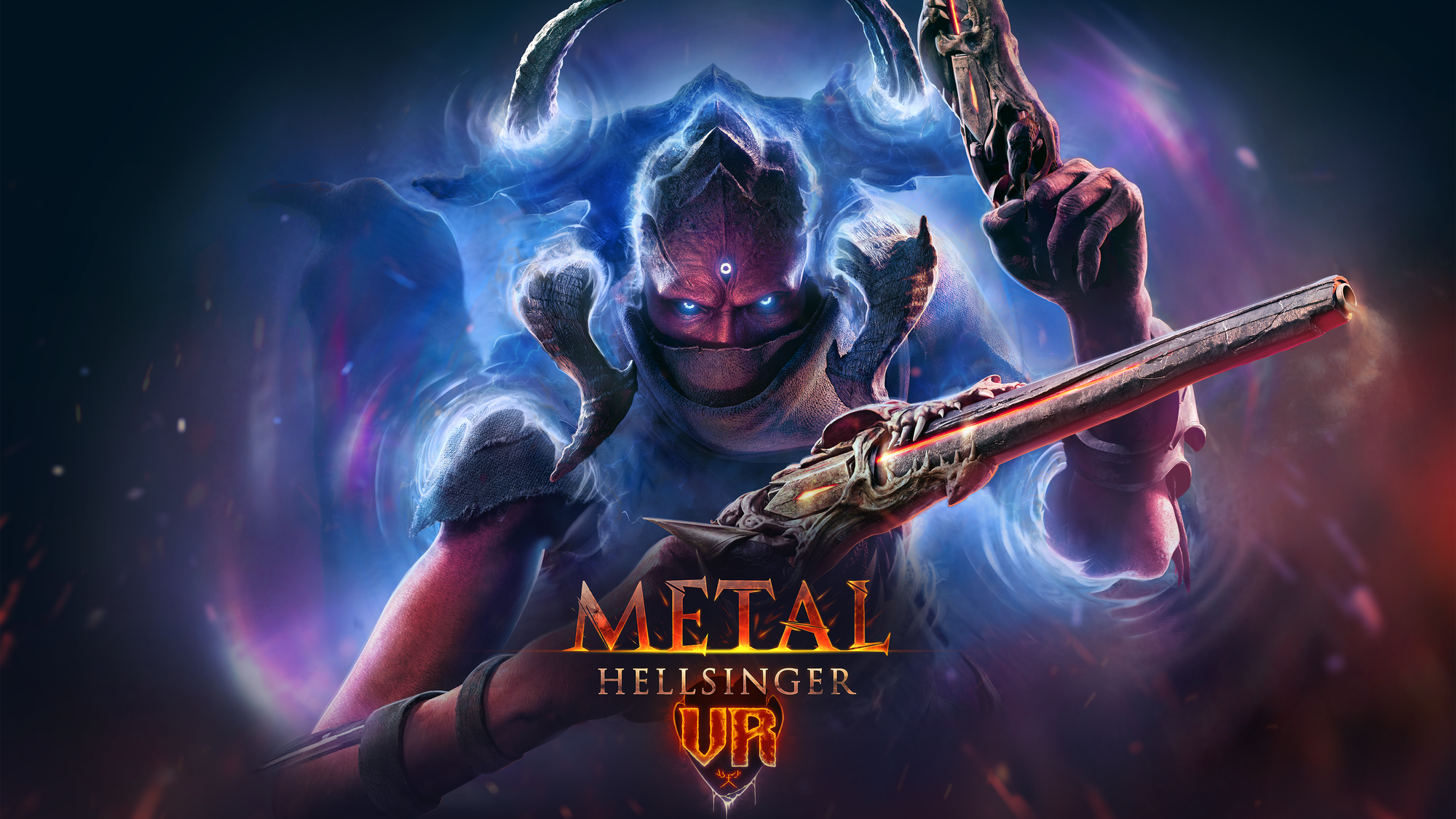Metal: Hellsinger took the gaming world by storm when it first unleashed its ballad of bloody rhythm-based FPS combat in 2022. Now, a new challenge has arisen for those willing to brave eight Hells with an upcoming VR port by Lab42 Games.
Before this week’s release date announcement, we recently spoke with several team members about bringing Metal: Hellsinger VR to life. Publisher Funcom’s Publishing Director, Ilya Salamatov, confirmed VR wasn’t initially in the cards. However, this adaptation originated from a “desire to enhance the immersive experience” of rhythm and FPS games, genres that Funcom considers “inherently well suited” for VR.
0:00
“It felt like a natural progression. The alignment of rhythm, action, and VR capabilities made the transition seem almost inevitable, allowing players to feel the beat and the chaos up close. Moreover, we saw VR community mods for the flat screen version and how much of a fun experience it could be – so the native VR version just felt right.”
You might not immediately recognize Lab42’s name, a team nestled in the heart of Leamington Spa in the UK, but they’ve been working on notable flatscreen games for years, including Call of Duty, Yakuza, and Don’t Starve. After adapting Crusader Kings III for consoles, they were ready to free Metal: Hellsinger from the confines of a flatscreen experience.
Lab42 designer Benjamin Culff recalled his surprise at how well this worked in VR with movement.
“Due to not going for teleportation as a movement method, we were left with seeing how it would feel to control the character using the base game movement values. Our aim was to adapt the core mechanics, reloading and weapon handling for example, and then see how it felt to play through the levels with the default movement. We ended up finding that the game felt great with the original movement that The Outsiders created and no changes needed to be made.”
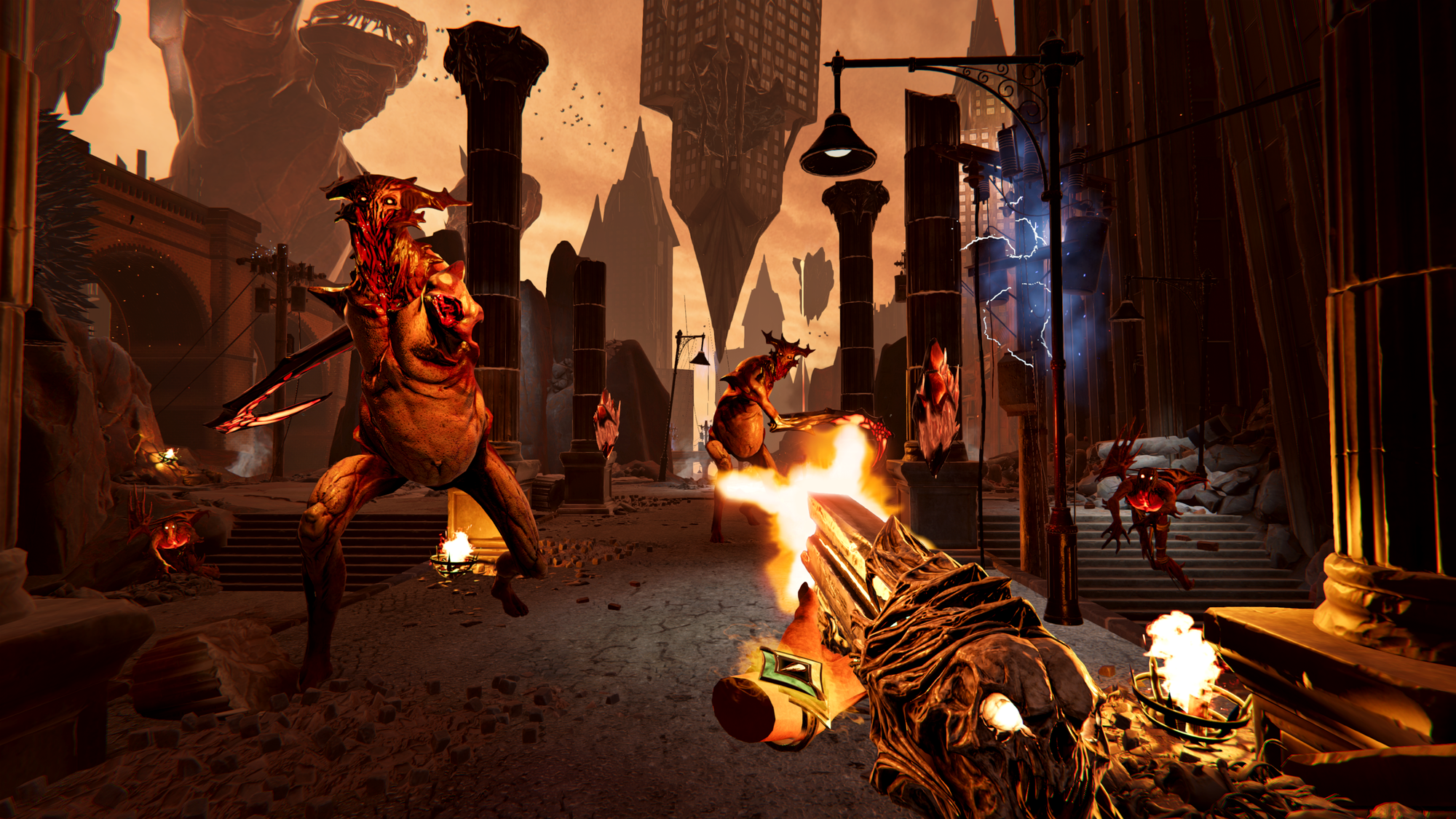
Given Metal: Hellsinger’s faster pace, Culff reassured us that they’ve also included plenty of comfort settings while retaining the core gameplay experience. This duality of being immersive yet arcade-like was the tightrope the team kept having to walk. Culff explained the discussion about whether Metal: Hellsinger VR would use physics-based weapon handling or keep things snappy and responsive.
“First off, there’s the obvious point of the weapons being able to point in any direction the player desires. This means putting in as few restrictions to handling the weapon as possible. Aiming should be one-to-one with hand/controller movements, and players should always be aware of where the gun is aiming. Luckily, the arcade nature of our game allows us to retain the reticles/beat indicator cemented in the base game so the direction your weapon is pointing is very obvious.
“It also needs to be really obvious which state the weapon is in without the use of text. We did [it] mainly through animation. Recoil is amplified more than the base game to ensure the player knows they have just shot the weapon but also when the weapon is ready to be fired again. Then there are the animations around reloading. We wanted to make the player feel in control of the weapon at all times so not a lot is done for them. Instead, when the weapon is in the middle of a reload, it is very obvious the weapon is in a not ready state and a player action is the only way to get it back in the ready to be fired state.”
Culff advised that Metal: Hellsinger’s fast-paced nature required bringing over some of the base game’s aim assist, explaining this was done so newer VR users on lower difficulties wouldn’t get overwhelmed by needing 100% accuracy. Lab42’s intention is to let such players focus more on being on the beat, gradually becoming more natural over time.
As for the studio’s methodology when translating a previously “flat” experience to VR, Culff believes it’s about retaining the fundamental mechanics.
“Translating a game to VR should always be about retaining the core gameplay experience of the original, flatscreen version. One of the best ways to do this is to actually change as little as possible (in order to retain the core experience) and anything you do change should only amplify the use of VR during the experience. However, there is a fine balance between the two which you must find.”
Finding that balance would be quite the learning experience in a few ways. For instance, Culff noted how many options there are to choose between when addressing how to approach reloading the player’s gun:
“We could have implemented an in-depth reload system where the player is performing actions like a realistic, military shooter. We were actually kind of close to this in our original design. The first iteration of the reload system was to have an action on every beat for 4-6 beats.”
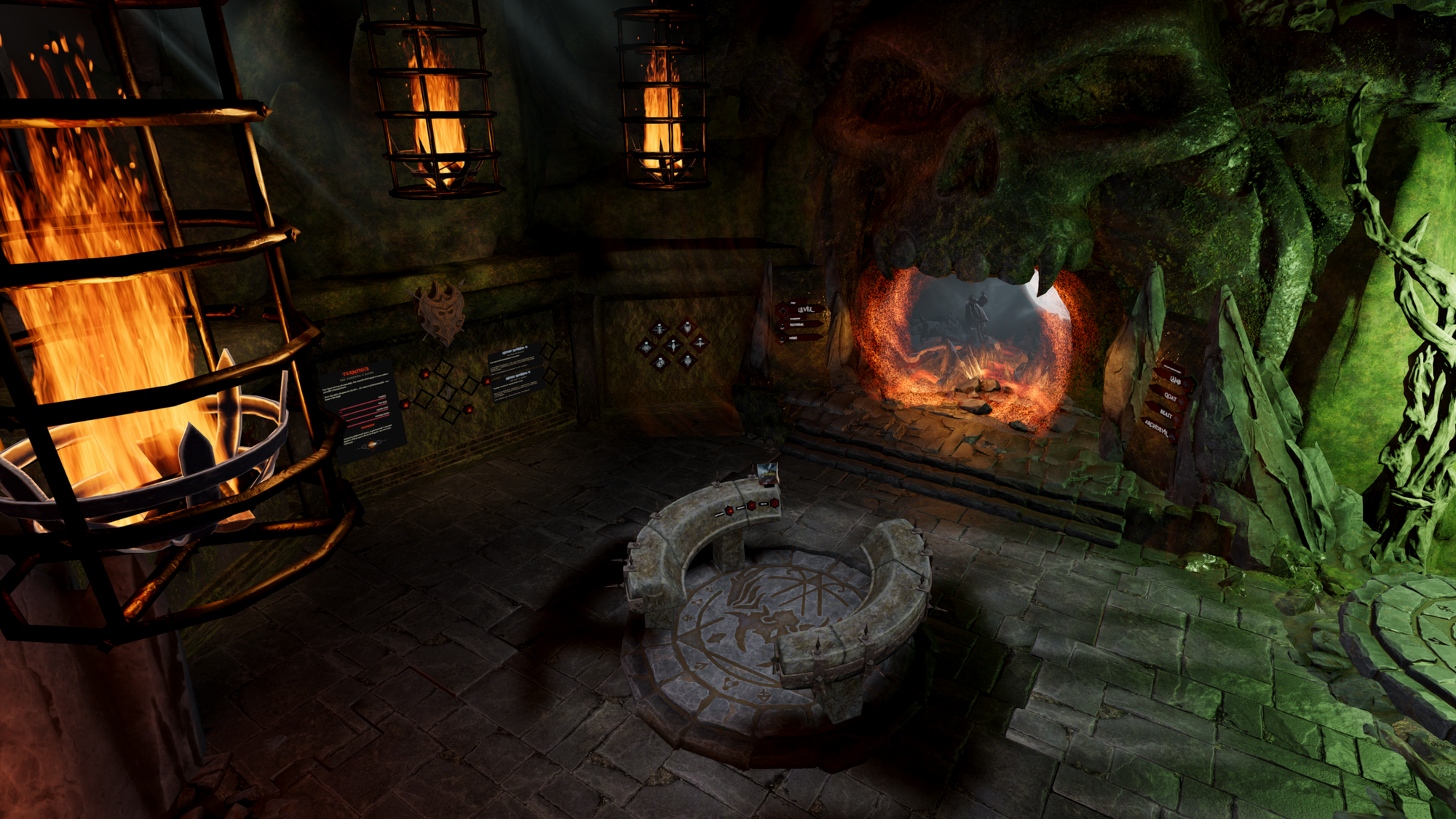
While that’s relatively in sync with the original game’s timing, Culff explained that the trick was discerning whether this complexity was truly called for.
“Our thinking was that requiring the user to complete an action on each one would create a satisfying sequence of hand movements. Yet testing on this first iteration revealed that it just didn’t feel like Hellsinger anymore. This first iteration lacked the feeling of the “golden beat.”
That refers to the beat you need to follow in order to pull off a faster reload in the original release. Every action in Metal: Hellsinger can be played to the beat. Being more in tune not only awards you a better score and improved performance of their weapons, but the songs playing in the background amplify to their best versions. That’s a lot of input already.
“Having to do complex hand gestures in a row whilst all the other action is going on? It would’ve been too much. This all ultimately left us with what we have now – a gesture reload system which uses the benefits of VR but also retains the satisfying feeling The Outsiders created in the original – with a hint of a learning curve for players to master too.”
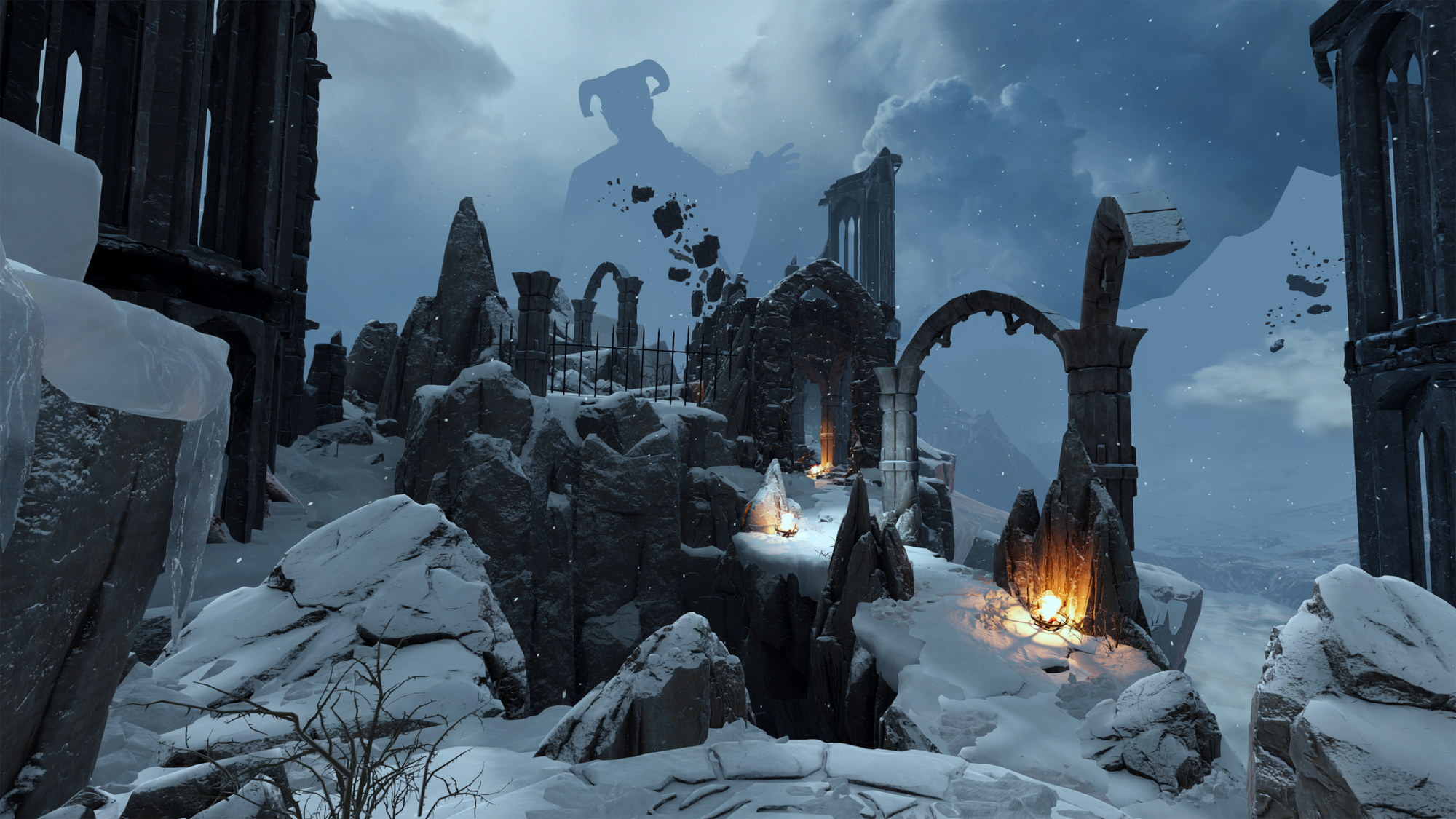
Yet perhaps the biggest surprise, as Culff recalled, was translating the HUD elements.
“At the beginning of the project we believed minimal UI was best as it is one of the easiest ways to immerse the player into the world. We initially failed to understand how critical it would be to have a typical “arcade game’’ UI always available to the player. We experimented with having core UI elements like health, score, hit streak and fury multiplier within the world as a more diegetic UI, but this proved to be very difficult to pull off. Ultimately, other than the health bar, the core UI ended up as a more typical UI bar. This way it was always available to the player, but we created it in such a way that it didn’t become too intrusive.”
Despite conceding to the genre’s needs, Lab42 was able to lean into the immersive nature of VR all the same, as Culff detailed.
“This stems into the beat indicator. We have many diegetic ways of informing the player about the beat/rhythm: a beat vignette, vibration, and in-world elements, but the clearest way was again to display it in a more traditional place. Allowing the player to change the position of the beat indicator was a nice comfort option to add which got good feedback from testers.””
Porting a flatscreen title to VR isn’t simply a question of design either, but also an array of different hardware specs. Metal: Hellsinger VR isn’t just targeting PC VR and the PlayStation VR2, but also Quest. Producer Ollie Cullen called it one of development’s biggest challenges as the studio strived to balance maintaining the high-quality while making it widely available.
Fortunately, the team wasn’t flying in without any ground to build upon.
“For the PC and PSVR 2 versions of the game, we were fortunate to have existing versions to work from. Although we needed to optimize the game for VR, we had a solid foundation. However, developing for Quest 2 & 3 presented a different challenge, requiring a unique approach to ensure both high performance and quality. Porting a game is distinct from developing a new one; it necessitates working with available tools to find creative solutions.
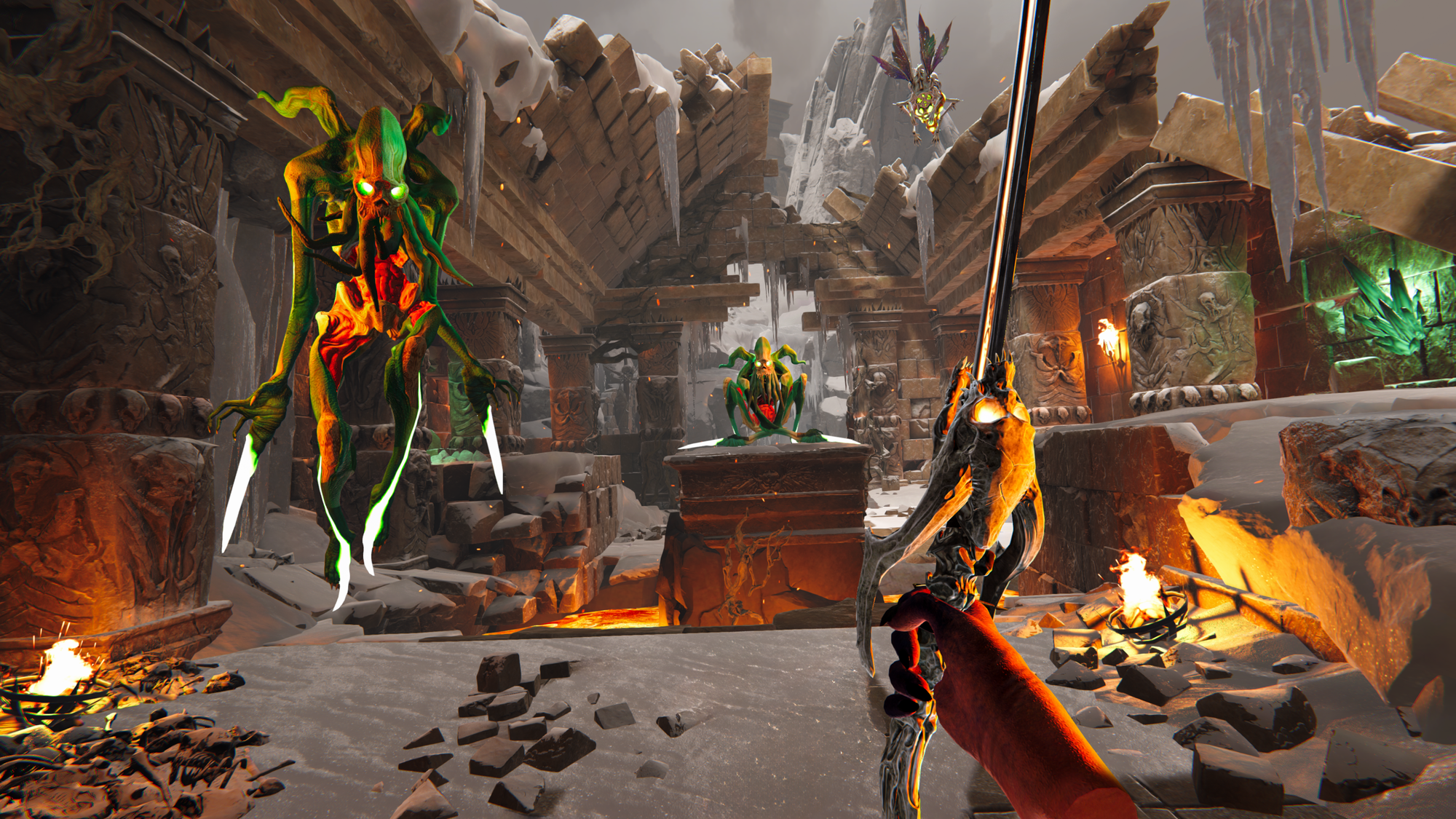
While many know Metal: Hellsinger as a shooter, the demonic lead sports a far wider arsenal. Adapting combat’s more unconventional weapons – the sword Terminus, the boomerang Hellcrows, and the bow Telos – soon emerged as another challenge. Culff explained these weapons are “vastly different” compared to their base game counterparts.
“Terminus was the most tricky weapon to translate into VR as trying to hit an object (such as an enemy) moving in a 3D space whilst you (the player) are also moving in that 3D space as you’re also trying to time your hit to the beat is a real challenge. Nailing this feeling and outputting the desired outcome took a long time to create, going through several iterations. Our biggest concern was not allowing players to use the sword like a toothpick.”
“To us, this meant putting the sword inside of an enemy and moving it by just shaking your hand in any direction, totally defeating the purpose of the beat system. This meant we needed to detect a point where we deemed the sword was traveling fast enough and only then allow an attack to occur. We also connected the speed at which the sword is traveling to the damage output, meaning tthere’smore reason to think about your swing and complete a full swing to get the best result.”
As for the Hellcrows, Culff confirmed they had to behave differently from other weapons as throwing objects to a rhythmic beat was a “unique challenge” for VR.
“Ultimately, we ended up with the solution we have today: the player enters a “throwing’’ state when they hold down the trigger, reaches the “throwable’’ threshold when their hand is moving fast enough, and releases the trigger to throw. From there, the original game’s code for the weapons takes over, and the hellcrow travels as far/as fast as they do in the base game. We didn’t want the player to have to be always aware of the Hellcrows location, so it returns to the player’s hand with no inputs required.”
Regarding Telos, Culff noted how bow and arrow weapons have been done countless times in VR but rarely paired to a rhythmic beat.
“Our first adjustment was to remove the need to reload Telos. The animation used to show reloading in the base game didn’t work with our new reload system as it was hard to create an animation which would match the players actions. Reloading a bow and arrow would’ve also been different to most other VR games and ultimately reduces the overall complexity of an already in-depth weapon. Then there is the problem of attaching one object to another. This was something new and unique for Hellsinger so getting this feeling right and easy to do took some time.”
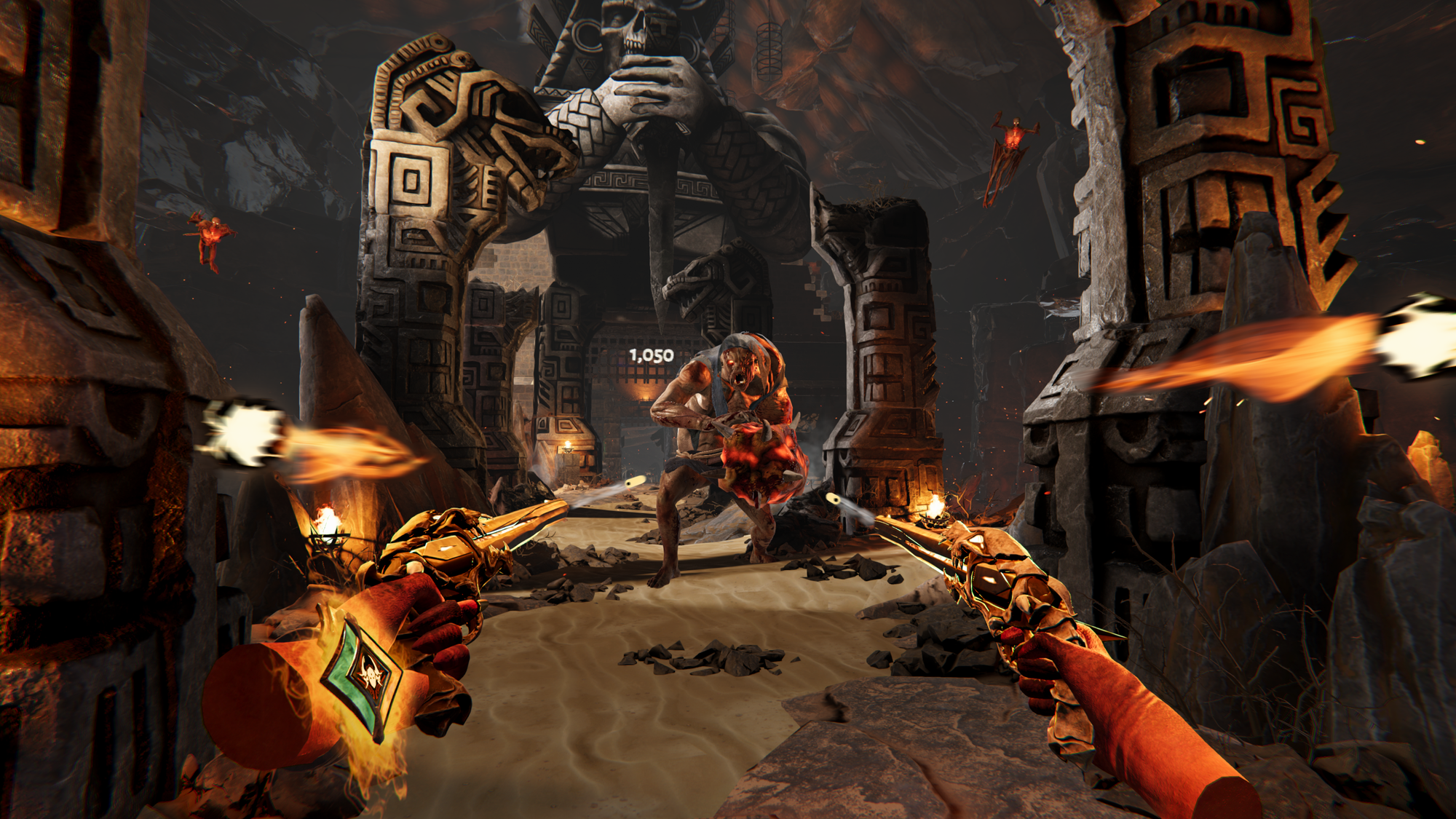
When asked which new addition shines brightest, Culff gestures to a surprising example – The Hub.
“It would have been very easy to slap the 2D menu from the original game into the VR version and call it a day, but this felt cheap and not what players old and new deserve. Although Hellsinger is not the most narrative-heavy game, the amount of world-building The Outsiders managed to create was inspiring and left us with many golden nuggets to turn into mechanics.”
Previously, your character would enter the level via a portal in the sky, and this new approach allowed for some world-building. Levels are now selected by vinyl discs, while other changes include having a wall of weapons you can pick up and place across it. This attention to detail was a labor of love for the team, as Cullen proudly declared.
“As huge fans of the original game, we knew that rebuilding this game in VR would be a natural fit. However, the moment that I personally knew that it clicked was the moment I obtained The Hounds in the Stygia level. It isn’t often that a port offers such a new experience to a game, and having the ability to shoot two guns in different directions in one of my favorite levels made me realize that Hellsinger in VR was a match made in heaven, or hell!”” Cullen chuckled.
Culff chimes in with a shoutout to the Hellsinger fans, emphasizing they wanted this VR port to retain the unique experience offered by the original game.
“The creation of the port could have been more tailored towards bringing in people who had never heard of the franchise and adapted to more “VR norms,” but this felt dishonest to fans of the original, and so a careful blend catering to both sides was needed.”
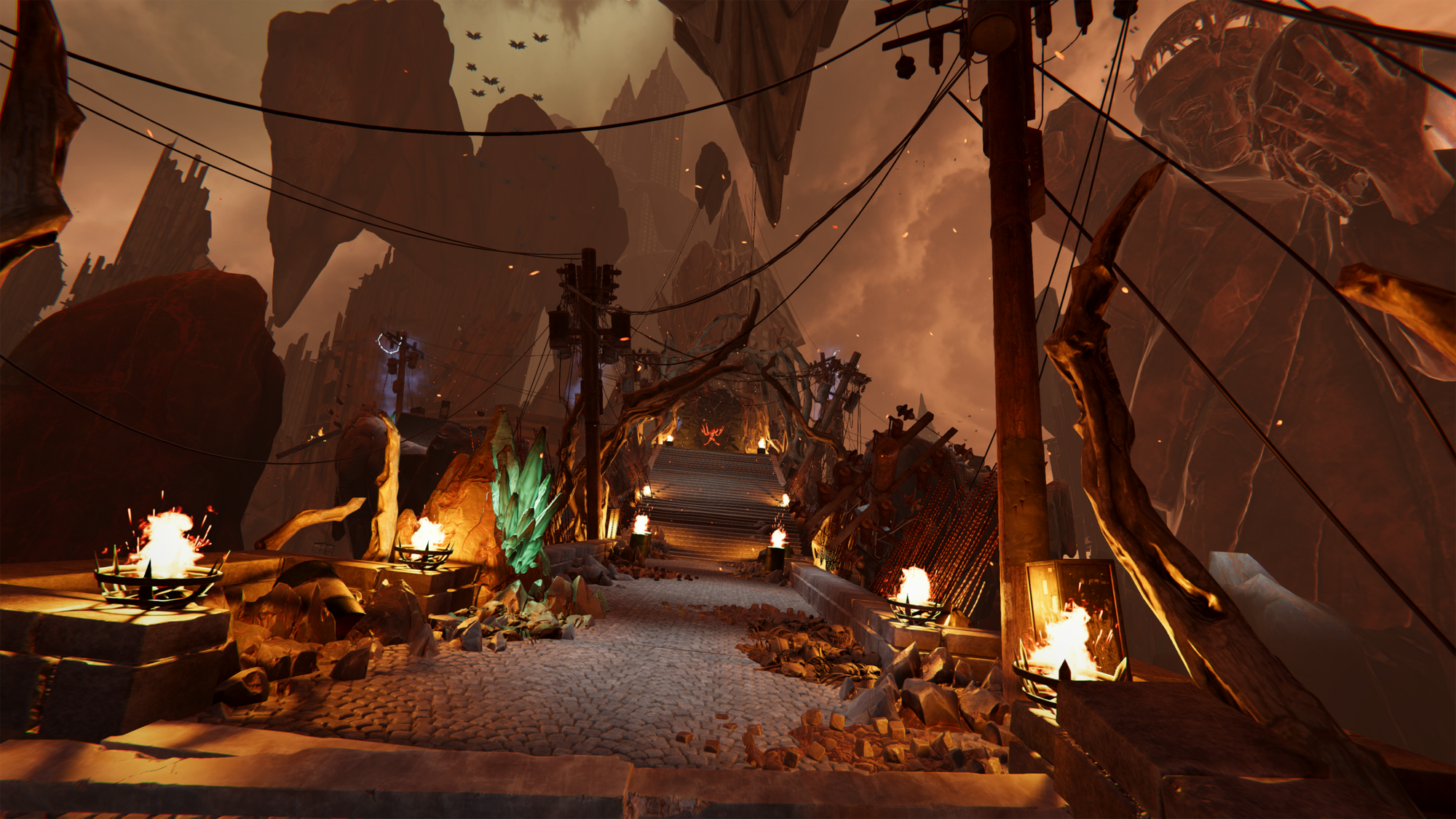
With the recent resurgence of rhythm games, particularly in VR with games like Beat Saber, Cullen described it more as a natural evolution rather than a surprise resurrection.
“With the increasing accessibility of VR technology, you can now experience the traditional arcade thrill right in your own home. Games that involve physical movement have long been popular,” citing the advent of motion gaming years prior. “VR takes this to the next level. Immersing players directly in the game world for an unparalleled experience. It feels natural to move your body to the rhythm.”
Cullen then summed it up succinctly.
“In Metal: Hellsinger VR, we transport players into a hellish landscape where they can strike down hordes of demons while headbanging to the rhythm. There ain’t much cooler than that!”
Metal: Hellsinger VR arrives on September 26 on Quest, followed by an October 3 launch on Steam and PSVR 2. A Steam demo is currently available.
